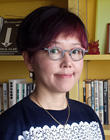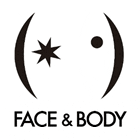Trans-border Physical Form - Construction of the Face-Body Studies in Transcultural Conditions
Yamaguchi K Masami
Professor, Faculty of Letters, Chuo University
Area of Specialization: Experimental Psychology
Trans-border physical form - Construction of the face-body studies in transcultural conditions
For five years from FY2017, our research group has been serving as an area representative in the Grants-in-Aid for Scientific Research (KAKENHI); specifically, in the sub-category of Grant-in-Aid for Scientific Research on Innovative Areas (Research in a Proposed Research Area). As part of KAKENHI, we are operating a project named "Construction of the face-body studies in transcultural conditions: Face and body expression connecting multiple cultures. It took a lot of time and effort, submitting a large amount of documents before the screening (incidentally, similar to many other researchers selected for KAKENHI, it was our second screening) to be selected as one of only two projects from the humanities and social science fields.
In the face-body studies project (abbreviated name of the aforementioned project), research is conducted by 6 planning teams and 23 public recruitment teams in cooperation with several research institutions in the United States, Canada, France, Italy, Australia and Switzerland. Research focuses on the three fields of psychology, cultural anthropology, and philosophy. Research group meetings are held biannually with participation from a large number of researchers. The culmination of the meetings are parties where researchers engage in active debate.
The goal of this research area is to understand the various individuals in transcultural conditions from the perspective of face and body. One of the hot topics in the first half of 2018 was the outstanding achievements of the tennis player Naomi Osaka. Osaka has lived in the United States for a long time and excels at communicating in English. However, while walking on the podium at the ceremony for the Australian Open, I noticed that she unconsciously bowed her head, despite being the winner and queen of the tournament. Upon seeing these gestures, I felt an undeniable bond with Osaka. At that moment, I realized again that the body is an unconscious reflection of a person's origin, and that we unknowingly reveal that origin through our body. In some respects, bodily movement is a crude phenomenon; however, it is this crude phenomenon that displays our essence.
Even as modern Japan faces a dilemma concerning the acceptance of foreign workers, our country is welcoming many foreign tourists in anticipation of the Tokyo Olympics. It can be said that current Japanese society is in the process of being transformed into an unprecedented transcultural society. One symbolic example is the acceptance of tattoos. In our research area, we appeal to the mass media for understanding tattoos. Amidst trends of avoiding tattoos, we propose going back in history and reexamining how tattoos have been treated in Japan.
As symbolized by the rejection of tattoos, the heterogeneity of another person's body evokes an intuitive feeling of aversion. Since modern Japan presupposes homogeneity, Japanese people go through life without experiencing such an implicit feeling of aversion. However, in order to comprehend foreign phenomenon, it is important to understand the mechanism through which this implicit feeling of aversion is generated.
Our research area addresses this issue from the perspectives of psychology, philosophy, and cultural anthropology. We examine the existence of heterogeneity in modern society and its conflict from a social background. We seek to identify the mechanism in our consciousness that senses heterogeneity; in other words, the sensibility for identifying heterogeneity and the process leading to prejudice through the incorporation into social judgment. It is especially important to understand how each social culture has obtained its perspective and the process through which that process is learned. By combining the knowledge gained in each field, we can understand the individual mechanisms for potential handling of foreign phenomenon, as well as the social conditions surrounding those mechanisms.
The future of virtual reality and physicality
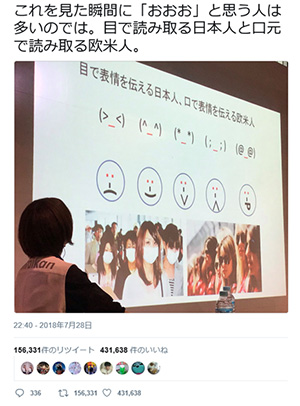
Scene from the talk event "What will happen to me in the virtual world?" Japanese recognize facial expressions of emotion by relying on the eye region, but Westerns focus more on the mouth.
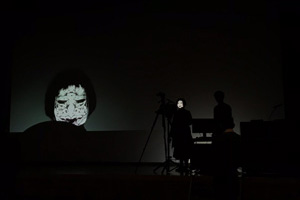
Demonstration of projection mapping on a face (Held on March 2, 2019 at Ushigome Tansu Citizen's Hall. Cooperation: Associate Professor Yoshihiro Watanabe (Tokyo Institute of Technology)
We run many events offering opportunities to make broad proposals and discuss these issues. For example, on July 29, 2018, a talk event named "What will happen to me in the virtual world?" was held at the National Museum of Emerging Science and Innovation. With the spread of mobile phones and smartphones, virtual reality chat is becoming a reality. Attempts are also being made to grasp the concept of personal identity beyond the body, something subject to change in conjunction with technological advancements. Advances in science and technology have created the possibility that we will transcend our faces and bodies. This event has received an overwhelmingly strong response, with over 400,000 likes on Twitter.
The talk event was held through cooperation between the philosophy group and the psychology group. Its success led to another event entitled "What is transculture?" which was held on March 2 and 3, 2019 through cooperation among the psychology group, cultural anthropology group, and philosophy group. The psychology group discussed physicality based on a technology exhibition of projection mapping on the face and body. The philosophy group discussed examples of how transgender and mixed race individuals transcend sexual and racial boundaries. The cultural anthropology group discussed the liberation and restraint of the physical body; specifically, the process of creating change while confronting transborder difficulties. Changes in the use of the veil in Islam was raised as an example in this discussion.
Transgender and mixed race individuals who transcend gender and racial barriers are prominent symbols of transculture. In addition to physical characteristics, such individuals face many difficulties related to individual identity.
Transcending bodies - transgender and mixed race
In recent years, mixed race individuals have been treated as a symbol of globalization and become an appealing aspect of Hollywood stars. There are many online articles with titles such as "Mixed Race, Pretty Face?" As the values for viewing mixed race individuals change, the identity of mixed race individuals is thrown into disarray by the transition. On the other hand, psychology has clarified that racial boundaries change depending on the side of the racial boundary inhabited by the person viewing another person's face. The ambiguity of how faces and bodies are seen can be examined from the perspectives of both individuals and society. The psychology, philosophy, and cultural anthropology groups are planning to hold an international symposium in February 2020. The symposium will examine the individual and society through research comparing developmental changes in how mixed race individuals are judged between cultures, as well as research focused on mixed raced individuals themselves.
Transgender individuals enable us to view the reality after transcending the gender barrier. When examining cross-border phenomena such as mixed race and transgender individuals, we can see the freedom sought by crossing barriers, the accompanying pain and suffering, and the way in which transculture individuals try to build new barriers after transcending old ones. Perhaps being protected by these new barriers will enable transculture individuals to reconsider the society in which they live. This perspective of seeing society through the body can be developed into a new interpretation of history. By examining the faces and bodies left in classic works and paintings, and by deciphering how these faces and bodies were expressed, we can obtain hints for understanding what was emphasized in past social cultures on an unconscious level, and what aspects of social culture received the most attention.
We will continue our efforts to establish face-body studies as a new academic area in the humanities and social sciences. We are focused on creating awareness for the physicality of which most people are unaware. By grasping the nature of people and the social situations in which they live, we aim to create awareness for the walls that we create unconsciously, as well as to understand and accept people who are different from ourselves. By using face-body studies to reexamine the relationship between individuals and society, I seek to propose new values that support diverse societies.
Face-body studies has undergone an interim evaluation and is now recruiting for late-stage research. If you are interested, please apply to the public recruitment for the sub-category of Grant-in-Aid for Scientific Research on Innovative Areas (Research in a Proposed Research Area). We are also planning various events for face-body studies. These events include the Face-Body Café, where opinions of face studies are exchanged in a philosophy café format, as well as a public symposium held at the Research Institute for Languages and Cultures of Asia and Africa (Tokyo University of Foreign Studies) in early December every year. I hope that you will join one of these events.
Homepage of the Face-Body Studies research area![]()
New information is also disseminated on Facebook and Twitter.
- Members of the Planning Teams
- Cultural Anthropology Group: Ikuya Tokoro (Tokyo University of Foreign Studies), Kosuke Takahashi (Chukyo University)
Psychology Group: Yamaguchi K Masami (Chuo University), Katsumi Watanabe (Waseda University), Akihiro Tanaka (Tokyo Woman's Christian University)
Philosophy Group: Tetsuya Kono (Rikkyo University) - Members of the Public Recruitment Team in the First Half
- Tetsuto Minami (Toyohashi University of Technology), Tian Xiaojie (University of Tsukuba), Yuki Yamada (Kyushu University), Kazuhide Hashiya (Kyushu University), Yoshimi Yamamoto (Tsuru University), Ichiro Kanaya (University of Nagasaki), Tseng Chiahuei (Tohoku University), Soichiro Matsuda (University of Tsukuba), Yoko Mizokami (Chiba University), Akito Miura (Waseda University), Isamu Motoyoshi (University of Tokyo), Takashi Tsukiura (Kyoto University), Masaki Tomonaga (Kyoto University), Yoshiyuki Ueda (Kyoto University), Mikio Inagaki (Osaka University), Kotaro Yashiro (Osaka University), Masahiro Okamoto (Fukushima Medical University), Nobuyuki Watanabe (Kanazawa Institute of Technology), Shoji Nagataki (Chukyo University), Takahiko Koike (National Institute for Physiological Sciences), Ryusuke Hayashi (National Institute of Advanced Industrial Science and Technology), Michiyo Miyanaga (Tokyo University of the Arts), Emiko Tanaka (Niigata University)
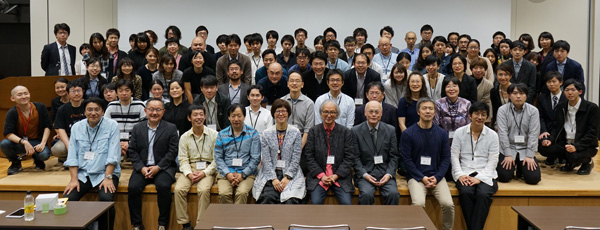
Group photo taken at the 3rd Face-Body Studies Research Group Meeting (held at the Okinawa Prefectural Civic Center on December 26 and 27, 2018)
- Yamaguchi K Masami
Professor, Faculty of Letters, Chuo University
Area of Specialization: Experimental Psychology - Yamaguchi K Masami was born in Kanagawa Prefecture in 1964.
In 1987, she graduated from the Faculty of Letters, Chuo University.
In 1989, she completed the Master’s Program in the Faculty of Letters and Education, Ochanomizu University.
In 1995, she obtained her PhD in humanities after acquiring required credits in the Faculty of Letters and Education, Ochanomizu University.